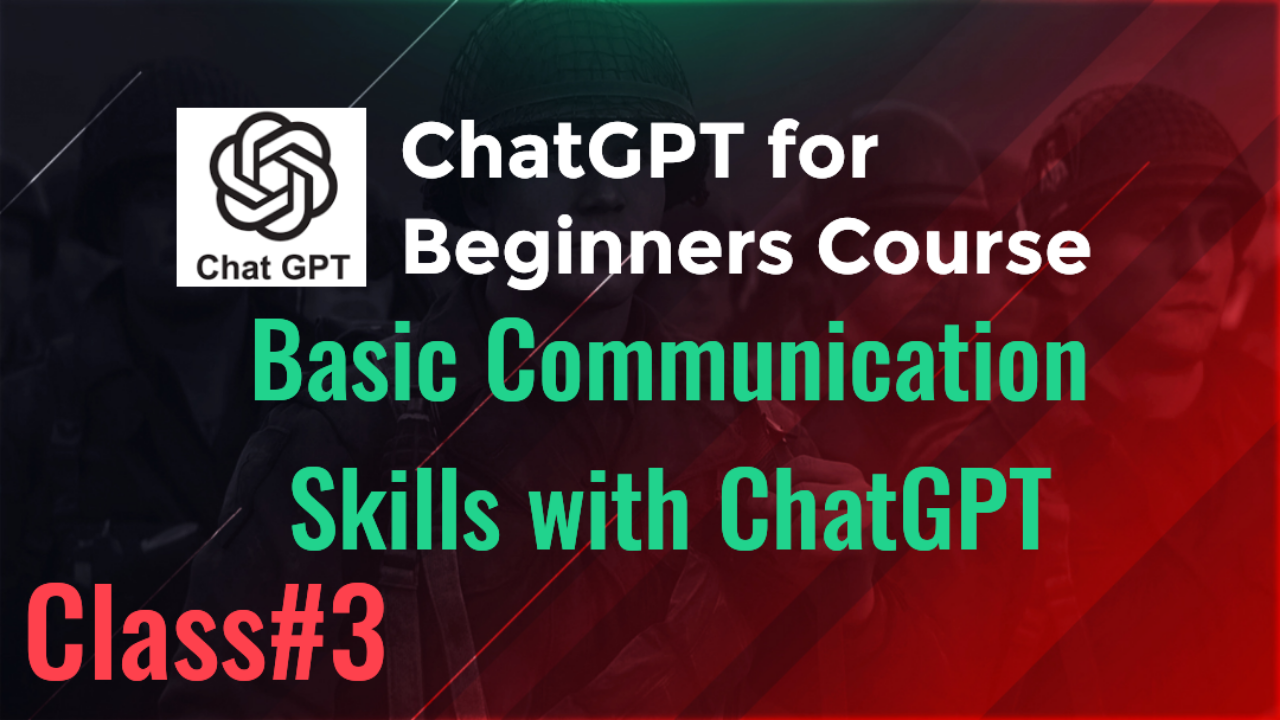Class 3: Basic Communication Skills with ChatGPT
1. How to Structure Questions
ChatGPT works best when you provide clear, specific questions or requests. Here’s how you can effectively structure your queries:
-
Be Specific:
Vague questions can lead to equally vague answers. For example:- Vague: “Tell me about cars.”
- Specific: “What are the latest trends in electric cars for 2025?”
-
Break Down Complex Questions:
If you have a multi-part or complicated question, break it into smaller steps. For example:- Complex: “Explain how electric cars work and compare their advantages over gas cars.”
- Broken down: “First, can you explain how electric cars work?” followed by, “Now, what are their advantages over gas cars?”
-
Ask Follow-Up Questions:
You can continue a conversation and build upon the previous response. For example:- After asking, “What are the benefits of electric cars?” you could follow up with, “Are there any downsides to electric cars?”
2. Understanding Simple Responses
ChatGPT provides concise answers, but sometimes a response may require further clarification. Here's how to interpret responses:
-
Ask for Elaboration:
If the answer seems brief, you can always ask for more details by saying:- “Can you explain more?”
- “Please give more examples.”
-
Simplifying the Answer:
If a response is too complex, you can ask for a simplified version:- “Can you explain that in simpler terms?”
- “Give me a beginner-friendly explanation.”
3. Managing Conversation Flow
Unlike traditional search engines, ChatGPT allows for an ongoing conversation. Here’s how to manage this flow effectively:
-
Refer Back to Previous Responses:
ChatGPT remembers context within the conversation, so you can ask questions that build on previous responses. For example:- After asking, “What are the benefits of regular exercise?” you could follow up with, “How often should someone exercise to achieve those benefits?”
-
Clarifying Information:
If something isn’t clear, don’t hesitate to ask:- “Could you clarify what you meant by ‘efficient energy usage’?”
-
Rephrasing Questions:
If ChatGPT doesn’t answer your question correctly, try rephrasing it:- “What’s the best diet for losing weight?” might not give the best response, so try, “What are some healthy diet tips for weight loss?”
4. Getting the Best Results
To ensure you get accurate and useful responses, consider the following tips:
-
Be Clear and Direct:
For example, instead of “Help me with my homework,” say, “I need help solving this math problem: 2x + 3 = 7.” -
Use Full Sentences:
While short prompts work, full sentences provide better context and clarity. -
Include Relevant Context:
If your question requires background information, make sure to include it. For example, instead of asking, “What’s the weather like?” try “What’s the weather like in New York on March 15?”
5. Advanced Tips for Enhanced Conversations
-
Ask ChatGPT to Take a Role:
You can ask ChatGPT to act in a specific role to help you with certain tasks. For example:- “Act as a language teacher and explain basic Japanese grammar.”
- “Act as a project manager and create a weekly to-do list.”
-
Give ChatGPT Specific Instructions:
You can instruct ChatGPT to format its response in a particular way, such as:- “Please give me a bullet-point summary.”
- “Explain this topic in 3 paragraphs.”
-
Use Multiple Questions in One Prompt:
You can combine several related questions in one prompt for a more detailed response:- “What is AI? How is it used in everyday life, and what are its future implications?”
Assignment
-
Practice Asking Questions:
Try asking ChatGPT different types of questions—both specific and general. See how its responses change based on the clarity of your query. -
Refine Conversations:
Test how follow-up questions and rephrasing can improve the depth of your responses. For example, ask a basic question like “What is AI?” and then follow up with “What are some real-world applications of AI?” -
Use Roles and Instructions:
Ask ChatGPT to act as a particular role or give instructions on how you want the response formatted, like “Generate a summary in bullet points” or “Give me a brief explanation as if I’m a beginner.”
In the next class, we’ll dive into Exploring Everyday Tasks with ChatGPT, such as managing schedules, setting reminders, and more practical uses.
Let me know if this works or if you need any changes!





















